Architectural Wonders of Qutub Minar
Embark on a free walking tour exploring Delhi's rich architectural heritage, with insights into stunning structures and delightful lunch spots along the way.
Time
3 Hours
Stops
7 Places
Distance
2.3 km
Mehrauli Archaeological Park
Begin your tour with a walk through Mehrauli Archaeological Park, a sprawling area with ruins and monuments dating back over a thousand years, offering a glimpse into Delhi’s architectural history.
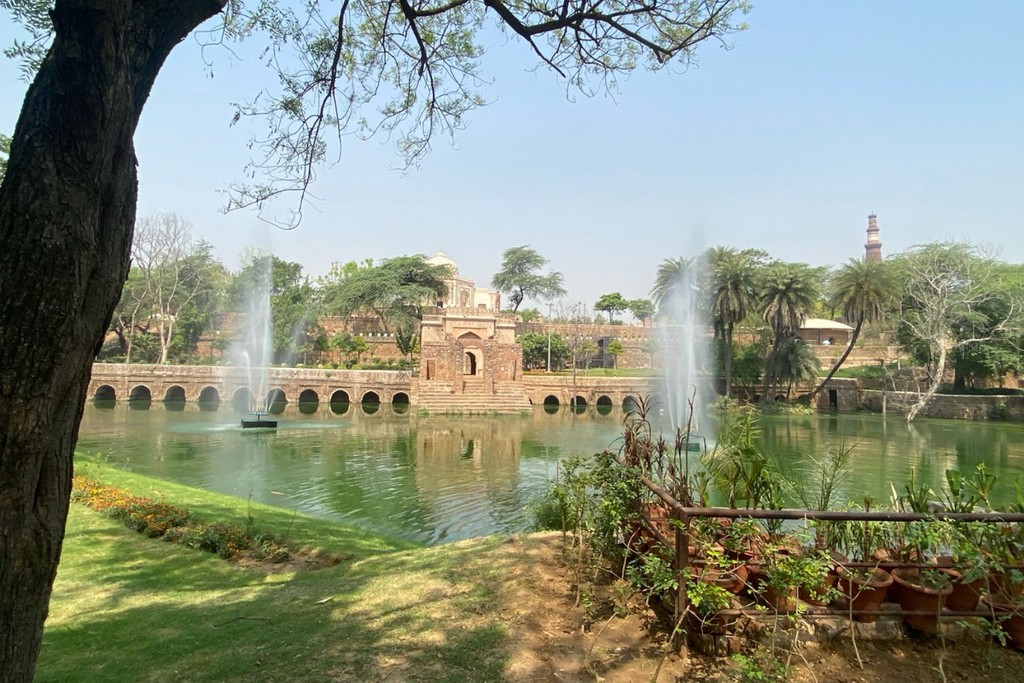
Mehrauli Archaeological Park (Source: Google Maps)
Mehrauli Archaeological Park is a historical treasure trove, showcasing ruins and monuments that date back over a thousand years. This sprawling area offers visitors a chance to explore the remnants of various dynasties that ruled Delhi, each leaving its mark on the landscape. The park features a variety of architectural styles, including Hindu, Islamic, and Indo-Islamic, reflecting the diverse cultural influences that have shaped the region. Among its notable structures are the tombs of important figures, ancient temples, and the remains of fortifications. This site not only serves as a window into Delhi's architectural history but also as a serene escape from the bustling city, allowing visitors to appreciate the beauty of ancient craftsmanship amidst lush greenery.
Jamali Kamali Mosque and Tomb
Explore the intricate architecture of the Jamali Kamali Mosque and Tomb, known for its beautiful Mughal-era design and the fascinating history of the Sufi saint Jamali.
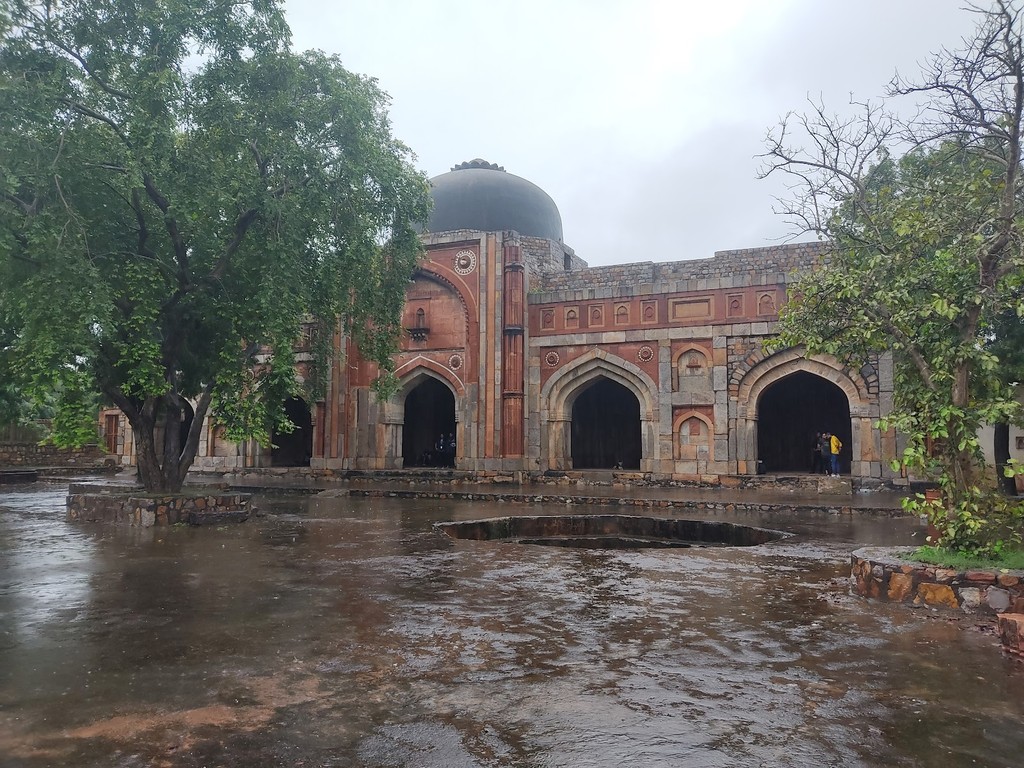
Jamali Kamali Mosque and Tomb (Source: Google Maps)
The Jamali Kamali Mosque and Tomb is a magnificent example of Mughal architecture, renowned for its intricate design and historical significance. Built in the early 16th century, it is dedicated to the Sufi saint Jamali, whose life and teachings continue to inspire many. The mosque features stunning red sandstone and marble work, adorned with detailed carvings and beautiful tile work. Adjacent to the mosque lies the tomb of Jamali, which showcases a unique blend of architectural styles, including Persian influences. This site is not only a place of worship but also a testament to the artistic excellence of the Mughal era, drawing visitors who seek to understand the spiritual and cultural heritage of India. Its peaceful ambiance and rich history make it a must-visit landmark for those exploring the architectural gems of Delhi.
Tomb of Balban
Discover the Tomb of Balban, an important pre-Mughal architectural site, showcasing the early use of true arches and domes in India.
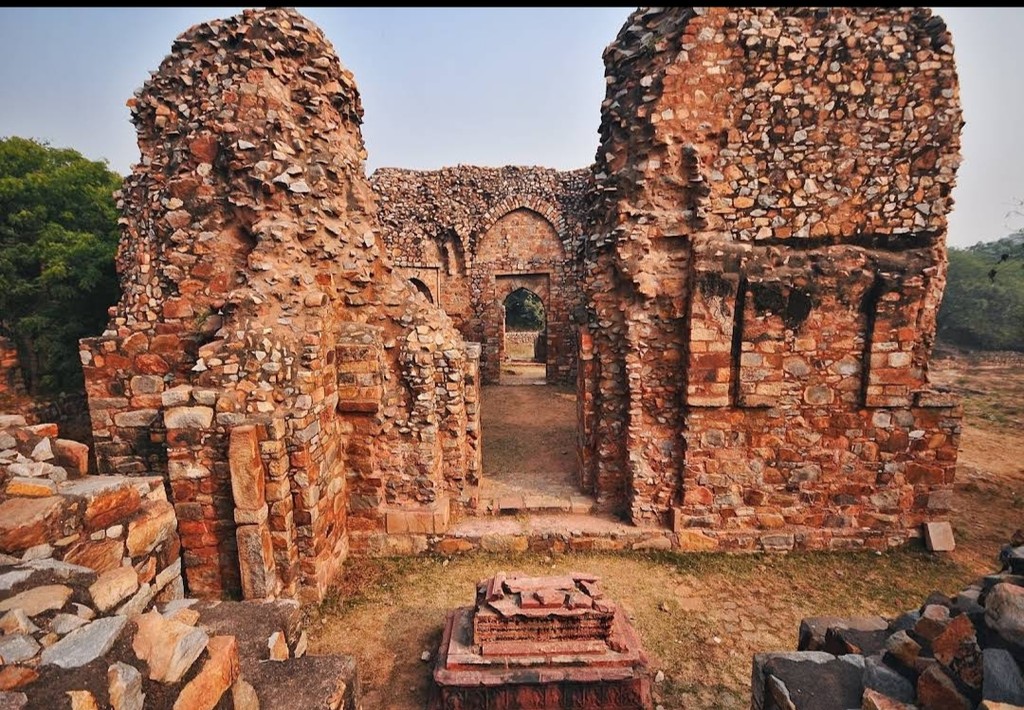
Tomb of Balban (Source: Google Maps)
The Tomb of Balban, an important site in pre-Mughal architecture, stands as a testament to the innovative use of true arches and domes in Indian construction. Built in the 13th century, this tomb is dedicated to Ghiyas ud din Balban, a prominent ruler of the Delhi Sultanate. The structure showcases a blend of Indo-Islamic architectural elements, characterized by its grand arches and intricate stone carvings. Balban's tomb is surrounded by a serene garden, enhancing its historical significance as a royal burial site. The architectural features of the tomb reflect the transition in design that would later influence Mughal architecture, making it a crucial point of study for historians and architecture enthusiasts alike. Visitors to this site can appreciate the craftsmanship of the era while gaining insights into the life and legacy of one of Delhi's notable rulers.
Rajon Ki Baoli
Visit Rajon Ki Baoli, a beautiful stepwell in the Mehrauli area, reflecting the architectural ingenuity of ancient water conservation methods.
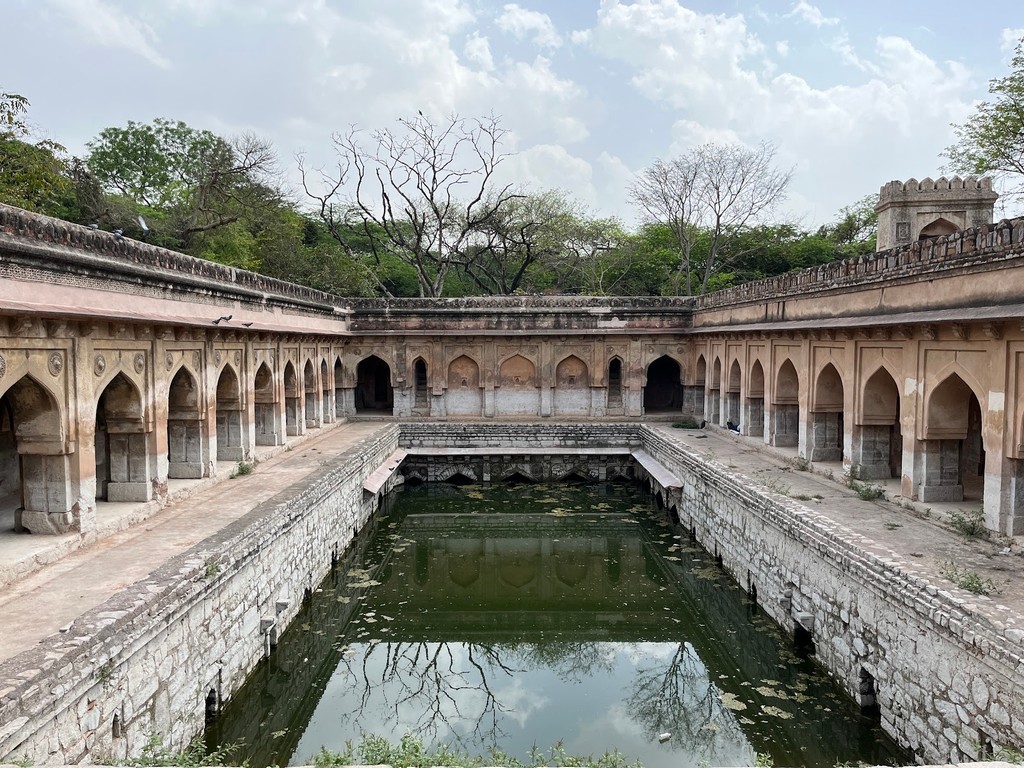
Rajon Ki Baoli (Source: Google Maps)
Rajon Ki Baoli is a stunning stepwell located in the Mehrauli area, exemplifying the architectural ingenuity of ancient water conservation methods. Built during the 16th century, this stepwell served as a vital source of water during the dry seasons and reflects the sophisticated engineering skills of its creators. The baoli features beautifully crafted stone steps leading down to the water level, with intricate carvings and inscriptions adorning its walls. This site is not only functional but also aesthetically pleasing, with its symmetrical design and serene atmosphere attracting visitors seeking to understand the significance of water management in historical Delhi. The stepwell stands as a reminder of the importance of sustainable practices in architecture and offers a unique glimpse into the daily lives of people in ancient times. Its historical and cultural relevance makes it a fascinating stop on your exploration of Delhi's architectural heritage.
Iron Pillar
Visit the Iron Pillar, located within the Qutub Complex, famous for its rust-resistant composition and historical inscriptions.
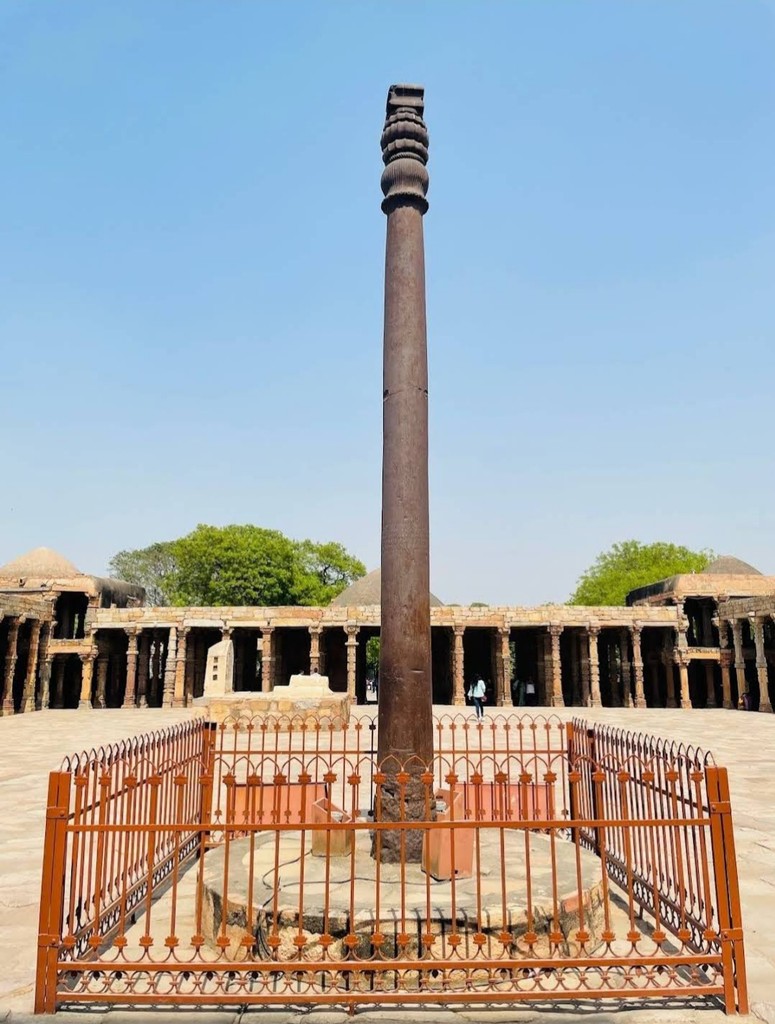
Iron Pillar (Source: Google Maps)
The Iron Pillar, located within the Qutub Complex, is an extraordinary example of ancient Indian metallurgy, famous for its rust-resistant composition and historical inscriptions. Standing at approximately 7 meters tall, this pillar is believed to have been erected during the reign of Chandragupta II in the 4th century CE and has intrigued scholars and engineers for centuries due to its remarkable resistance to corrosion. The pillar is adorned with inscriptions in Sanskrit, detailing the achievements of the Gupta dynasty, making it an important archaeological artifact. Its presence in the Qutub Complex adds to the historical significance of the area, which is recognized as a UNESCO World Heritage Site. Visitors to the Iron Pillar can marvel at the engineering prowess of ancient India while pondering the cultural and historical narratives that this remarkable structure embodies.
Qutub Minar
Marvel at the Qutub Minar, a UNESCO World Heritage Site and the tallest brick minaret in the world, showcasing stunning Indo-Islamic architecture.
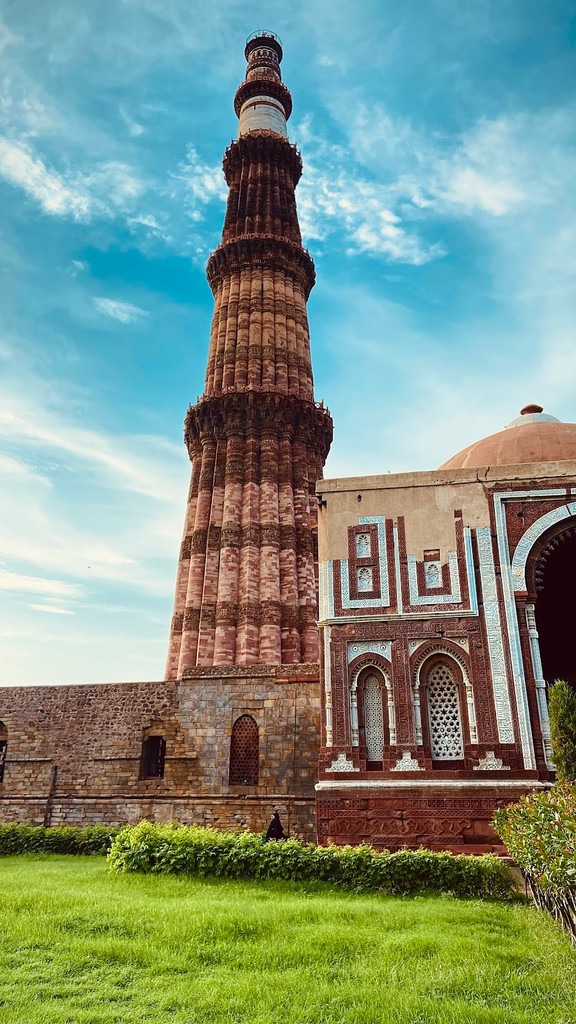
Qutub Minar (Source: Google Maps)
The Qutub Minar, a UNESCO World Heritage Site, is the tallest brick minaret in the world, standing at an impressive height of 73 meters. Constructed in the 12th century, this architectural marvel showcases stunning Indo-Islamic design, characterized by intricate carvings and detailed calligraphy. The minaret was built to commemorate the victory of Qutb al-Din Aibak, the founder of the Delhi Sultanate, and serves as a symbol of the rich history of the region. The Qutub Minar is surrounded by a complex of historical structures, including the Quwwat-ul-Islam Mosque, which is one of the earliest mosques in India. The site attracts millions of visitors each year, who come to admire its architectural beauty and learn about its historical significance. As a remarkable achievement of engineering and artistry, the Qutub Minar continues to inspire awe and appreciation for the cultural heritage of Delhi.
Alai Darwaza
Admire the Alai Darwaza, the main gateway from the southern side of the Qutub Minar complex, known for its intricate carvings and Islamic architecture.
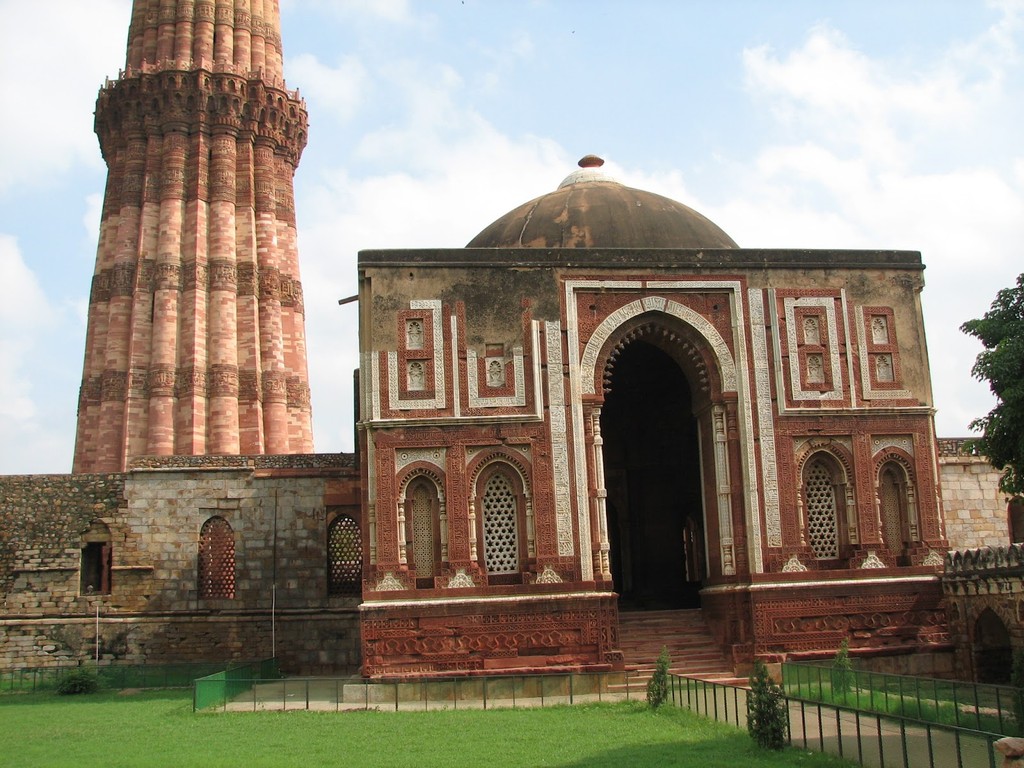
Alai Darwaza (Source: Google Maps)
Alai Darwaza, the main gateway from the southern side of the Qutub Minar complex, is renowned for its intricate carvings and stunning Islamic architecture. Built in the 14th century by Alauddin Khilji, this gateway is a significant example of Indo-Islamic architectural style, featuring a blend of red sandstone and white marble. The elaborate geometric patterns and floral motifs that adorn the entrance reflect the artistic excellence of the period. Alai Darwaza serves as a testament to the grandeur of the Qutub Minar complex and its historical significance as a site of cultural confluence. This gateway not only provides access to the minaret but also stands as a symbol of the architectural innovations that emerged during the Delhi Sultanate. Visitors to Alai Darwaza can appreciate the craftsmanship and design that went into its creation, making it an essential stop for anyone interested in the architectural heritage of Delhi.

Your travels, your rules.
Create your own Free Walking Tours.
Set your preferences, distances and anything you want to do or see.
Completely free, no payment required.